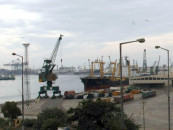The VAT measure will fail

A VAT is like a sales tax, except that it is imposed not just at final sale, but at each stage of production, with each one in the chain paying the tax on what they sell the product for, and taking credit for what they paid for the materials they purchased. Under both, business profitability, consumer price, and government revenue are identical.
Why then would anyone prefer the more burdensome VAT to Sales Tax? Largely, for aesthetic reasons, economic theory suggests that VAT will be an “efficient” tax, if the tax/credit chain is not broken, exports are exempted, and imports are taxed properly. Opponents of VAT cite the numerous practical difficulties involved, including the meeting of these conditions.
Even proponents of VAT do not expect it to yield an immediate increase in revenues. On the IMF’s authority, the government holds, in their last policy memorandum that: “It is estimated that the additional revenue generated could reach three per cent of GDP per annum over the medium term.” This may or may not be so, but its immediate impact will certainly be negative.
Reviewing the experience of 143 countries over 26 years, a paper published in July 2007 by two IMF researchers, Michael Keen and Ben Lockwood, finds that governments usually adopt the VAT under an IMF programme — they refrain from saying “pressure”. Their findings also suggest that the introduction of VAT in an agricultural economy with low tax ratio, like Pakistan, will most likely lead to a fall in revenues.
The IMF knows this. In their January 2010 review they note that, “the introduction of the VAT [may create] a significant workload for tax officials that could temporarily weaken tax collections.”
The government knows this. In their December 23, 2009 statement it explained why the General Sales Tax (GST) “did not work very well”, saying that “the base was gradually eroded as the weak administration was unable to cope with refunds”. The ‘temporary’ policy response led to widespread domestic zero-rating for the main productive sectors. The situation was exacerbated by a decision of the authorities in 2004 to dispense with the auditing function, which was effectively suspended.”
They could have added that the going rate of bribe demanded by tax officials was, and probably still is, 30 per cent of the assessed refund, and there was no getting around it. And, most retailers offered, and continue to offer consumers, two prices: one without receipt or tax, and another with both. These abuses will explode under VAT. Another IMF staff paper notes that “like any tax, the VAT is vulnerable to evasion and fraud. But its credit and refund mechanism does offer unique opportunities for abuse”.
In sum, it is no secret that the tax base has not widened. Enterprises still can’t obtain refunds, and are harassed by auditing requirements. When the much simpler GST “did not work well” because of these factors, why will the far more complicated VAT with “unique opportunities for abuse” do better? This is the question that the IMF needs to answer.
The writer is a retired economist who blogs at afpakwar.com (arshad.zaman@tribune.com.pk)
Published in the Express Tribune, June 2nd, 2010.


















COMMENTS
Comments are moderated and generally will be posted if they are on-topic and not abusive.
For more information, please see our Comments FAQ